or, some remarks on Byhaven 2200, Permaculture and Volunteer Projects
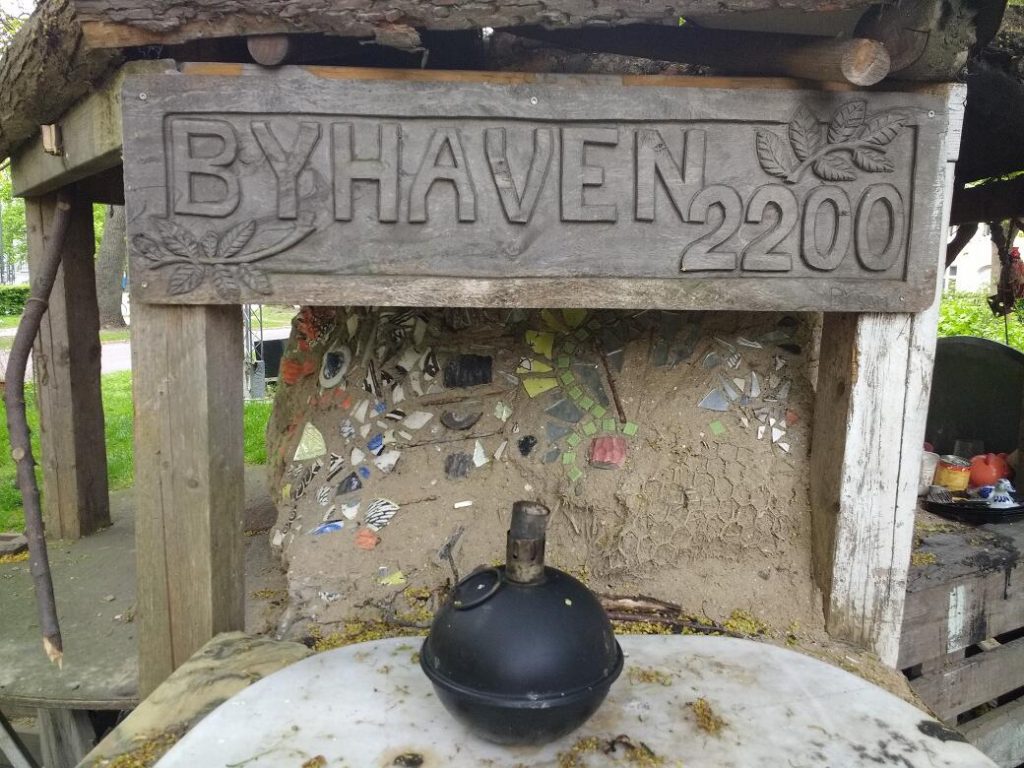
In May 2018, Copenhagen Municipality bulldozered the urban garden called Byhaven 2200 which had existed for 6 years.
Byhaven 2200 had not been able find a group of committed people who would form a stable core team, handle the contract, and carry on the project.

On the occasion of spring 2019 coming,
here is some reflections on what the reasons might be
for the death of an urban garden –
a successful urban garden, a poster child even for the movement.
These thoughts shared hoping they might be useful for other gardens and people, and other volunteering and community projects.
It is my personal take on things, so no doubt others will disagree.
Og man kunne jo starte med spørgsmålet om sproget –
hvorfor på engelsk og ikke på dansk?
Det kommer vi tilbage til.
Jeg skriver på engelsk så at alle kan forstå mig –
og du forstår mig jo også …
And yes, one could start with the issue of language – english, danish?
It brings us straight to the first point:
Being local
A local urban garden needs to be local, needs at least a core group of local people – and local here means
people who live close enough to just say
“i ll have a quick look down to the gardens”, meaning, a maximum of 5 minutes away.
People who can look down on the garden from their windows.
In the beginning, the garden had a core group of such people,
and we could easily activate 20, 30 people to show up on a work day.
But people moved – some moved on to related projects outside the city,
some to commercial ventures.
And while it was obvious, that many neighbours and local residents enjoyed being in the garden, harvesting a little bit, and having a slice of pizza with us, it is also true that there was never a strong active group of locals participating.
The seed effect
Good projects inspire new ideas, continuations, growth – that is wonderful.
They are like seeds radiating out.
In the process, the center of the seed might dry out.
I have observed this in many independent volunteer driven projects so far,
whether it was in gardening, music or mindfulness –
growth dries out the seed.
The seed vanishes.
Other
A general problem of our times seems to me the phenomenon of always wanting
something other
than what we actually are pretending to be involved in.
You are in an urban garden, but you really want to have a farm.
You are in an urban garden, but you really want a career in permaculture.
You are in an urban garden, but you really want to do interviews for your university.
You are in an urban garden, but you really want to play guitar.
You are in an urban garden, but you really want to study sociocracy.
You are in an urban garden, but you really want to make pizza.
This is not a criticism in people who want these other things –
mmm, i loved making pizza instead of digging for roots …
But it is a problem for a garden that needs tending –
when you get three requests per week for interviews on the social experiment of a garden,
but you cant find three people to move soil, build sheds, or harvest.
This is amplified by another phenomenon – the garden died …
A facebook death
At the time of its death, the garden’s facebook group had 1870 members,
the “active gardeners” subgroup had 130 members.
Yet, we could not activate five people for a work day,
or find five people to take responsibility to become the new contract owners.
Clicking the “like” or “join” buttons is (too) easy –
showing up on a rainy day to work in the garden is not.
And facebook has another negative effect on: conflicts, when taken to facebook to be discussed, certainly will grow and not be solved. Have a read of the Byhaven page in retrospect.
And to new gardens, do yourself a favour: do not have a facebook group.
Alcohol(ocals)
The garden, being in the middle of the Nørrebro town quarters,
has always been been exposed to all the natural phenomena you find in a city.
A rather stable group of locals, some of which have lived here for decades and many of whom are alcoholics to varying degrees, was present at the garden more or less constantly.
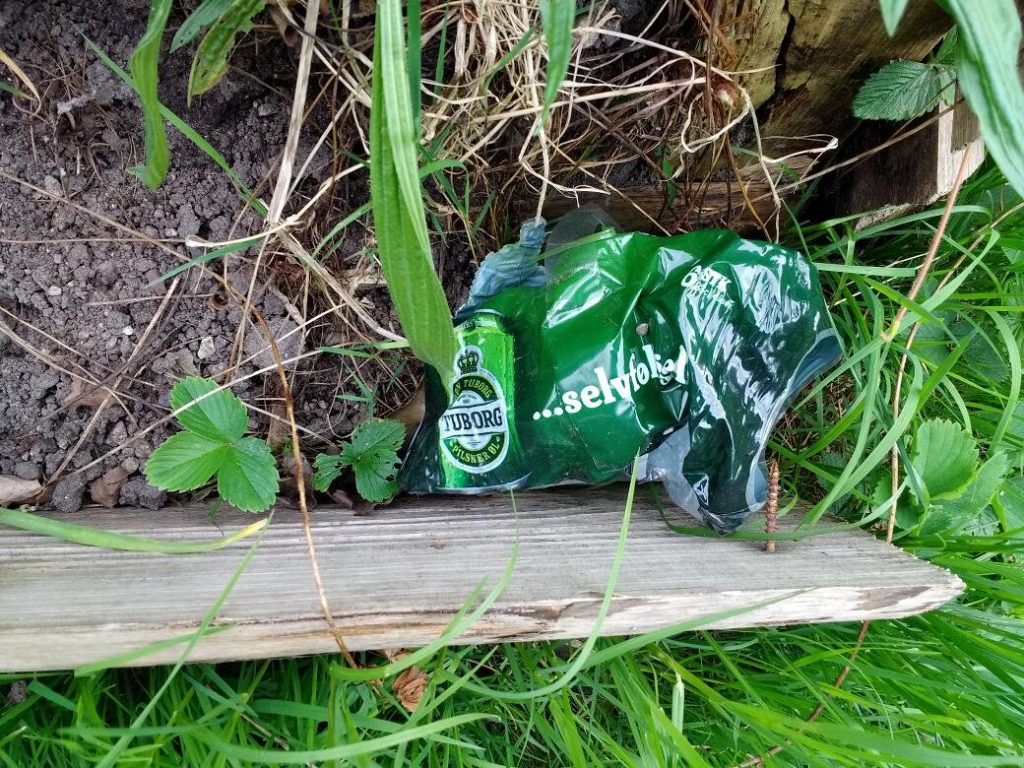
Many of them considered this place “their place”, the bench “their bench” – and in a certain way, they were right at that.
Their relation to the garden project was ambiguous:
On the one hand, the garden project had driven out the local pusher scene,
created a somewhat homely place – a place to be.
Global
On the other hand, the fluctuating group of urban garden people, many of which did not speak their language, seemed to be scary, or irritating at least.
And why would those people have an agreement, a contract with the municipality, when they were just students passing through, and not even spoke the language?
Aversions varied between mild irritation and downright racists slurs and insult.
Bottle collectors of colour, likewise, were not popular with the group,
And again, there are two side to this:
Bottle collectors might be used to rich kids not minding them taking their empty bottles.
If your trove of empty bottles is your next drink, it is not up for taking.
Seen from the garden project’s side, synergies with the group of locals were ambiguous too:
The local group helped with the garden in many ways –
i remember the locals finding and shlepping the big heavy slab of stone that became the kitchen work desk.
Painting the kitchen cabinet, collecting cigarette stubs, keeping the place in order.
But they also scared people away –
while there were many fantastic and sweet people among them,
the mood often would turn aggressive and loud, as the hours and the bottles passed.
That was something that one could take, if one was local and somewhat robust, but it did scare off new people, and handling the conflicts consumed a lot of energy, effectively making some core people leave the garden.
Permaculture, disconnected
Permaculture, if understood in a holistic way, needs to be connected to its local context, and would have to take on the human factors and tensions.
Permaculture at the garden often seemed to hover above ground, instead of being rooted in the ground.
Symptomatically, and connected to the Facebook Factor, days after the bulldozers came, there was no discussion of events on the garden’s group page, instead a stream of event ads kept coming –
an ad for “Inaugural Earth Activist Training” posted to a dead garden,
and a book:
“Our new website for the Book on Permaculture is ready! Permaculture is a holistic approach …”
The role of the municipality
When the bulldozers left, they left behind an empty plain. The garden had once listed a total of 110 species of useful plants, and many of those did very well without human support –
the garden turned into a wild oasis of urban flora.

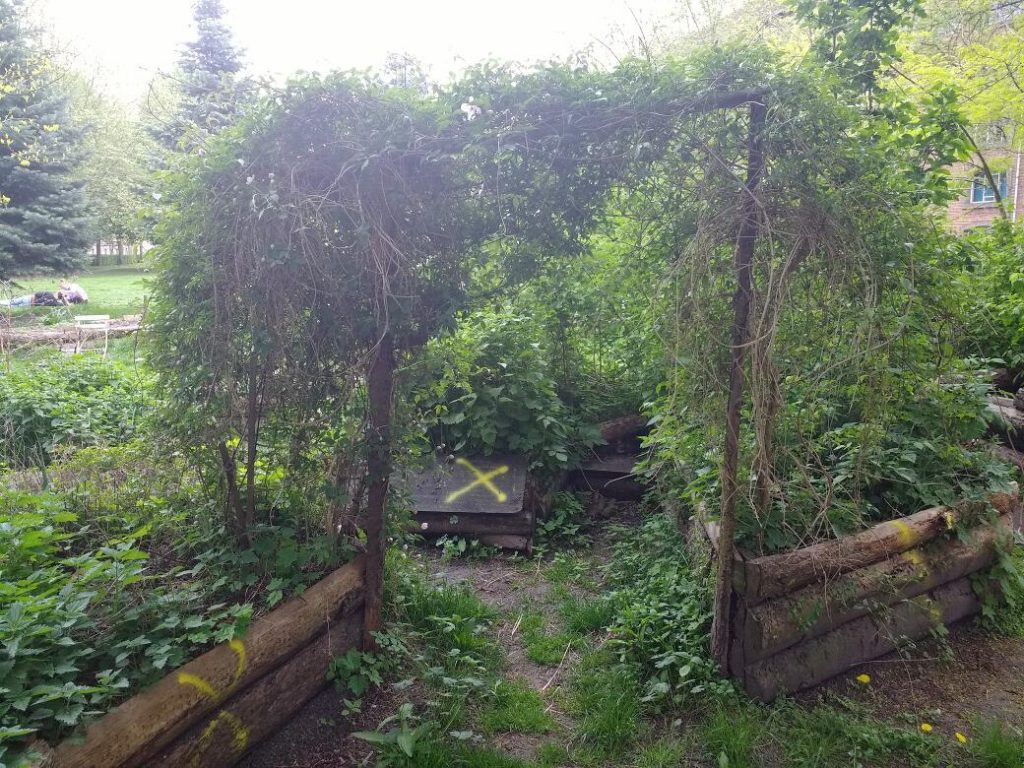
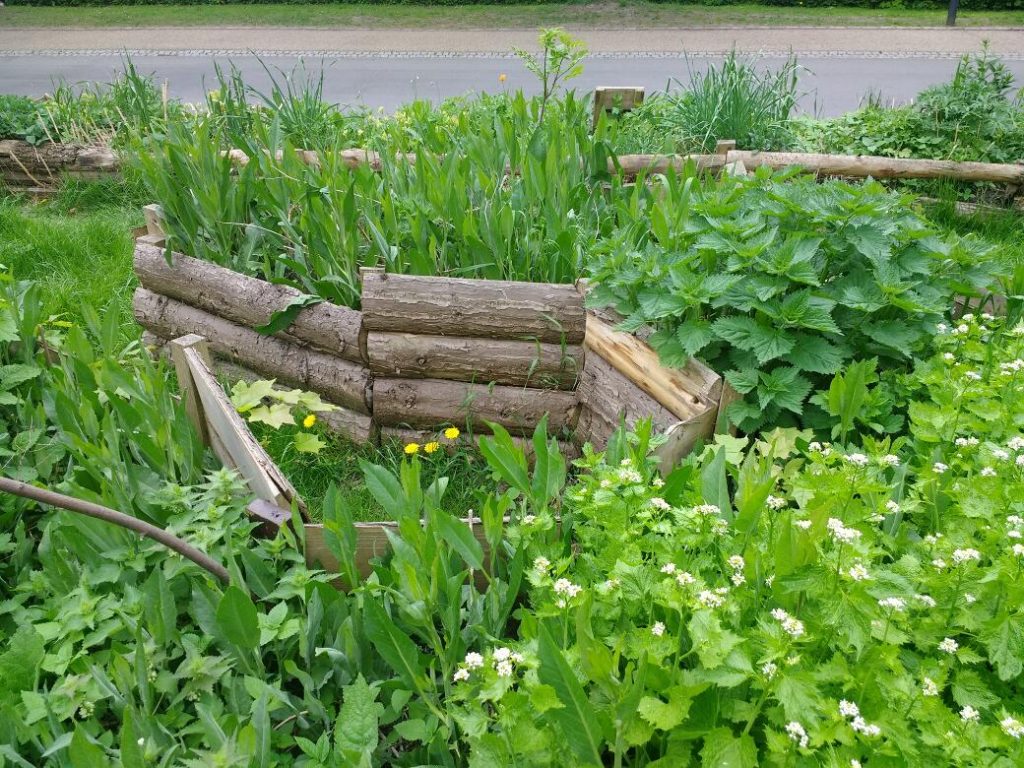
But, while supporting the garden in some ways -as they had along the way, with funds and work – , the municipality had always wanted “order” –
and “openness”, interpreted in a way that said:
there should not be any shelters, hidden corners, places for people to be.
But it seems humans in and around the garden always valued exactly that –
hideaways behind edges, tables surrounded by flowers, a kitchen under the cover of a tree.
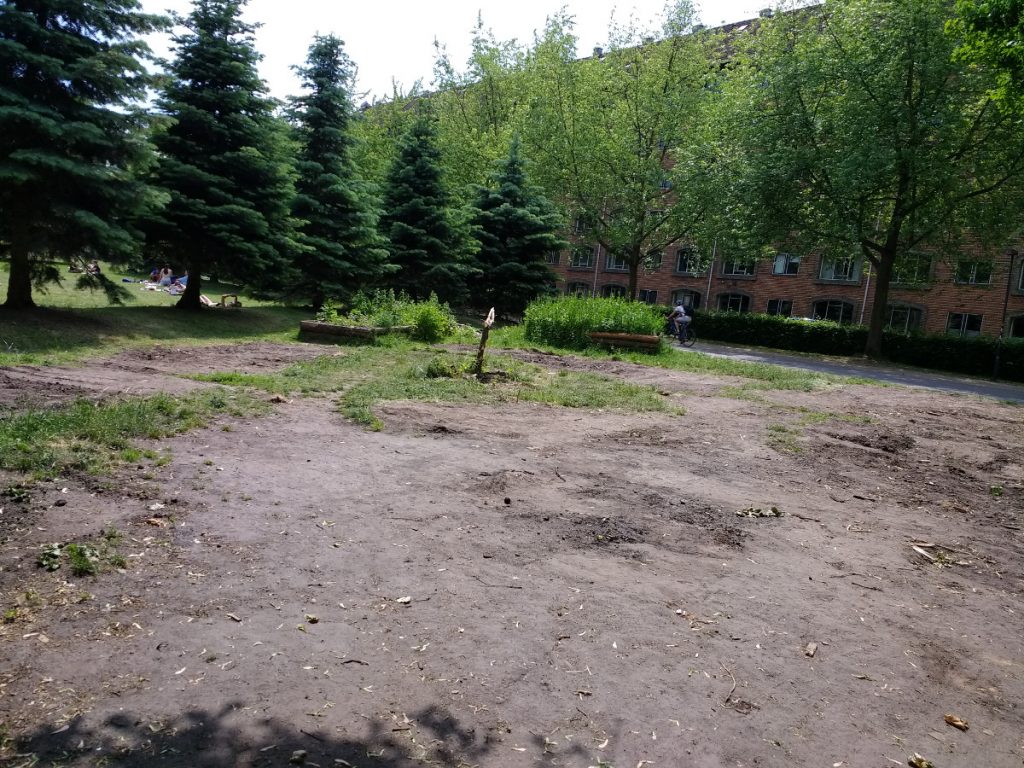
(At one point, the garden team was ready to build a Buckminster Fuller style greenhouse dome.
Prototypes were built and the construction plan worked. Knowing the municipality would not allow any structure that humans might re-purpose as a night shelter, we kept the dome really small – no space to stand up or lie down in. Still, we did not get a permission.)
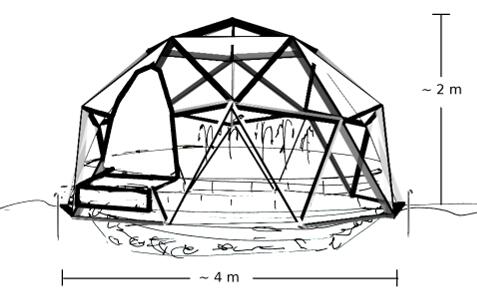
When the remaining group of volunteers in April 2018 failed to constitute itself as a contract partner for the municipality, the decision
When the remaining group of volunteers in April 2018 failed to constitute itself as a contract partner for the municipality, the decision was made to destroy the whole garden, except for 2 or 3 beds.
In one of these, a little A4 notice, to invite future generations of garden activists.
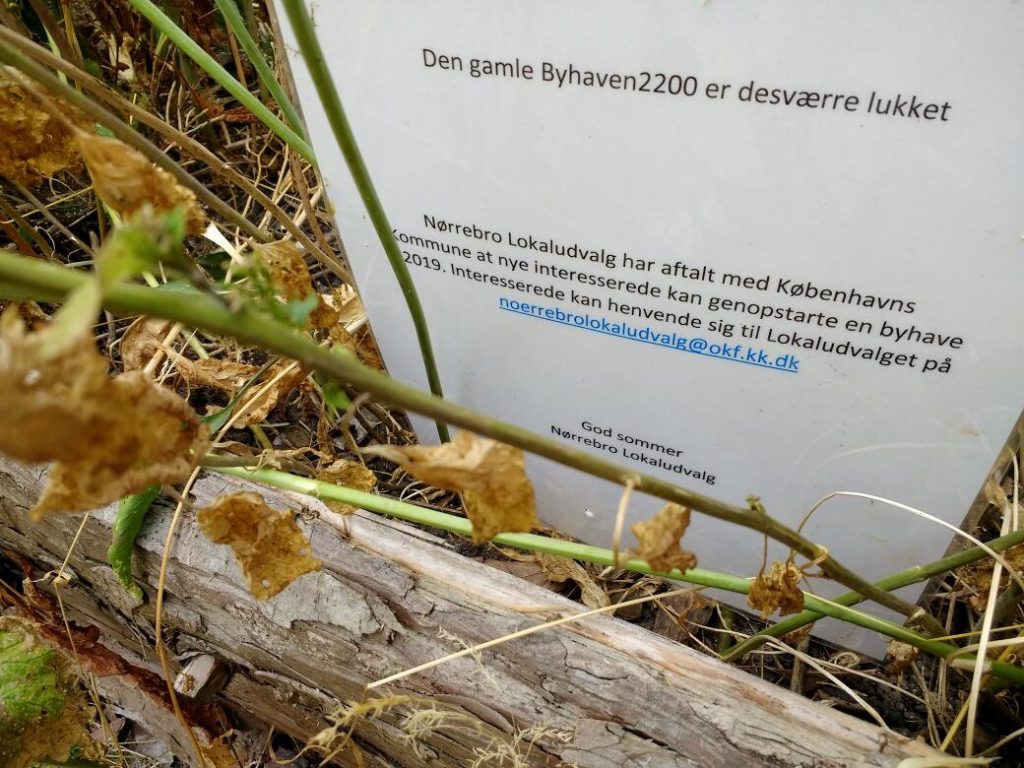
And now?
When i gave a first draft of this article to a good friend, he rightfully remarked that it was missing a conclusion, a perspective.
I am not sure i have one.
It is certainly possible to re-start the garden, re-establish the wealth of species, and maybe learn from some of the mistakes we made.
Build a new pizza oven, a new table, and plant seeds again.
But it all depends on people. And whether there are people who actually want to make that happen is unknown to me. It looks like things are not getting easier, with the Copenhagen Municipalities fresh plans to dismantle its support for all green volunteer projects, by removing the position of the volunteer project coordinator.
But it has been argued that volunteer projects do not necessarily need a volunteer coordinator, and a living urban garden does not necessarily need the municipality’s support, beyond the mere permission to use public space.
It all depends on people and the will to do it.
0 thoughts on “Death of an urban garden”